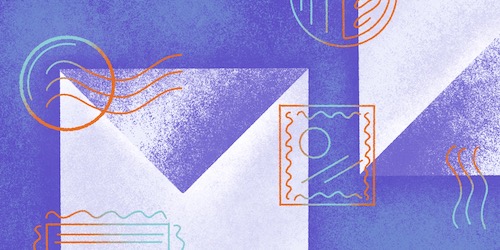A Guide to Shipping Boxes and Mailing Envelopes for Your Online Store

The success of your online store depends on your ability to effectively ship your products to customers. In fact, 73% of online shoppers report they would not buy from a store again if one of their purchased items arrived damaged.
To prevent your products from being damaged in transit, you’ll need to select the right packaging.
This decision isn’t as simple as it may seem. Yes, it basically breaks down to whether you’ll use shipping boxes or mailing envelopes for each order. But within those two categories, there are dozens of variations to choose from.
What Type of Packaging Should You Use for Your Ecommerce Business?
Like we mentioned, you have more than a few choices here.
If you use envelopes, should they be cushioned or non-cushioned? If you use boxes, how big should they be, exactly? And should you save money by sticking with standard materials? Or are branded elements worth the extra cost?
These are just a few of the choices you’ll need to make.
In this guide, we’ll review everything you need to know about mailing envelopes and shipping boxes for your online store.
Mailing Envelopes
The benefits of using envelopes rather than boxes include:
- The materials themselves are less expensive.
- Because they take up less space, using envelopes also reduces your storage and shipping costs.
- Unlike boxes, there’s no need to set up or tape envelopes (most mailing envelopes come with built-in peel-and-seal strips), so they reduce the amount of packing labor that’s required to ship out your products.
- Envelopes are flexible, which allows you to use the same envelope size for many different types of orders.
Because of their relatively limited capacity, mailing envelopes are best suited for light and sturdy items, like apparel and jewelry.
One of the most important choices you’ll need to make regarding your mailing envelopes is whether they’ll be cushioned or non-cushioned (note that the cushioned option is often referred to as “padded” or “bubble” mailing envelopes). Cushioned envelopes provide more protection, but non-cushioned envelopes are less expensive.
For soft items like a t-shirt, a cushioned envelope is unnecessary. But for more fragile items, the extra protection is likely worth the extra cost.

Furthermore, there are three options when it comes to the material of your mailing envelopes:
- Paper: The standard manilla envelopes that you’ve surely seen many times before are made out of paper (they’re available in other colors as well). This is a solid all-purpose, affordable option for shipping your products. And if eco-consciousness is important to your brand, you can easily find versions that are made from recycled paper.
- Paperboard: These rigid envelopes, also known as Stayflats, are designed to (you guessed it) stay flat throughout the entire shipping process. They’re excellent for protecting printed products like calendars and books from being bent or wrinkled.
- Plastic: For heavier products or products with sharp edges, you may want to use more durable plastic envelopes, which are also known as “poly mailers” due to the fact that they’re made out of polyethylene. Another benefit is that these envelopes are weatherproof, and they also have a more high-end aesthetic.
Shipping Boxes
We covered the many benefits of mailing envelopes above, but they’re simply not an option for particularly large or heavy products.
In that case, you’ll need to use shipping boxes.
The first thing to consider when selecting a shipping box for an order is the size. You don’t want it to be too big, as this can cause the product to be damaged by sliding around while it’s being shipped. Also, customers tend to be annoyed by the waste — sustainable and responsible packaging is important to many consumers.
But you don’t want it to be too small either, as you need some cushion to protect the product from impact. Another reason to minimize the size of your boxes is that many shipping carriers, including UPS and FedEx, take dimensions into account in addition to weight when determining their rates.
Generally, about two inches of cushion on all sides is just the right amount.
Of course, two inches still leaves some room for your product to move. Fragile products will require extra protection, such as:
- Tissue Paper: This is one of the most affordable ways to fill empty space and secure the products in your shipping boxes.
- Bubble Wrap/Air Pillows: These air-filled plastic packing materials allow you to add protection without adding much weight.
- Packing Peanuts: Tissue paper and bubble wrap/air pillows might not be enough protection — you’ll need the stronger support of packing peanuts for especially heavy products.
- Gel Freezer Packs: Finally, impact may not be the only thing you need to protect your products from. If you’re shipping food or some other perishable item, gel freezer packs will not just fill empty space but also keep your products from spoiling.

Corrugated cardboard is by far the most commonly used material for shipping boxes. Their design, which is characterized by interior folds that support the sides of the box with columns of air, allows them to be both strong and lightweight.
These boxes are available in all sorts of shapes and sizes. Another advantage? They’re recyclable as well. Plus, they’re stackable and don’t have any sharp edges, which makes for easy storage.
If you regularly ship out orders of different sizes, you should consider using multi-depth corrugated boxes. These boxes are scored at different intervals along their sides, so you can cut them down to the size you need. Buying a large quantity of multi-level boxes is typically more affordable than buying smaller amounts of different-sized boxes, as you’re able to benefit from a bulk discount.
To Brand or Not to Brand Your Packing Materials?
Both mailing envelopes and shipping boxes can be customized with your logo and other branding elements. But is it worth the investment?
At a time when many people have multiple items delivered to their house per week, if not per day, this will really help you stand out. And considering how many options people have when shopping online, standing out is incredibly important. Forty percent of consumers report that branded packaging will make them more likely to buy from a store in the future, and 68% say that branding makes them more excited to open a package.
In addition to branding the outside of your envelope/box, you can customize what’s inside as well. Tissue paper can be branded with your logo, and including a thank you note is another nice personal touch. Writing these notes by hand is even more impressive, though only stores with a low volume of orders will have enough time for that.

Branding doesn’t just have to be your logo, either. Especially on the inside of boxes — feel free to get creative and print copy, such as instructions for using the product, customer reviews or a message from the founder, on it.
With all that said, branded packaging can be expensive and even slow down your fulfillment. You’ll need to weigh the long-term benefits of branded packaging against the additional investment that you’ll need to make upfront.
It ultimately comes down to your bottom line. What can you afford to do — time- and cost-wise — right now?
Meet Yourself Where You're At
Generally, smaller stores may find that they need to keep short-term costs down to stay afloat. Larger stores, on the other hand, may have enough of a runway to invest in branded or pricey shipping materials now in order to reap the rewards of improved customer loyalty in the future.
Ultimately, you should choose packaging that will both serve your budget and securely get your items to your customer. Once you have that part nailed down, you can explore other, fancier packaging options if it makes sense for your store and marketing efforts.

Adam Ritchie
Adam Ritchie is a writer based in Silver Spring, Maryland. He writes about ecommerce trends and best practices for Shogun. His previous clients include Groupon, Clutch and New Theory.



